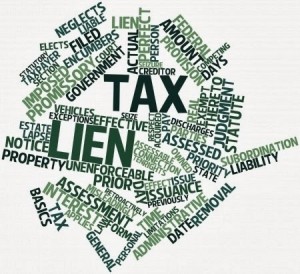 The order of priority for claims against a property is typically done by a number of factors that are set by the state or county statute of the property. The most prevalent one found in almost every county is a race notice factor. This means the priority is determined chronologically based on whatever gets recorded first. If a specific lien against the property is record on a certain date, any additional lien or mortgage that is recorded after that have secondary priority and so on. There are many cases where two mortgages are done at the same time, a first mortgage and a second mortgage on the same piece of real estate. So, in general, you’ll find that that race notice factor kicks in so that an earlier recording has a priority over later recording. However, there are exceptions to that rule.
The order of priority for claims against a property is typically done by a number of factors that are set by the state or county statute of the property. The most prevalent one found in almost every county is a race notice factor. This means the priority is determined chronologically based on whatever gets recorded first. If a specific lien against the property is record on a certain date, any additional lien or mortgage that is recorded after that have secondary priority and so on. There are many cases where two mortgages are done at the same time, a first mortgage and a second mortgage on the same piece of real estate. So, in general, you’ll find that that race notice factor kicks in so that an earlier recording has a priority over later recording. However, there are exceptions to that rule.
Certain types of liens, such as government issued liens, have automatic priority by statute. For example, if a tax bill is not paid on a piece of real estate then the tax bill has first priority on claims against the property. Additionally, some other types of liens such as mechanics liens may have some priority because they can’t get wiped out by a foreclosure.
So how does one clear a lien on a property title? Even if a lien is paid off and the debtor has paid the amount owed under that lien or mortgage, the lien still remains on the property until the creditor files a lien release saying it’s off the title.
 A lien release document is a separate recording which cancels out a previously recorded lien or encumbrance on that property. For example, if a lien is filed on a property and later on that lien is paid off or removed from the property, the original lien document remains in the same place, or book, it was recorded originally. So, even if the lien has been cleared and you’re looking through the book which has it recorded, you’re going to see lien. It’s not going to be removed or get stamped paid and clear. Nothing is actually going to happen to that document and it will remain in that book. In fact, it is illegal for a county recorder to alter or remove a document. It must remain in place.
A lien release document is a separate recording which cancels out a previously recorded lien or encumbrance on that property. For example, if a lien is filed on a property and later on that lien is paid off or removed from the property, the original lien document remains in the same place, or book, it was recorded originally. So, even if the lien has been cleared and you’re looking through the book which has it recorded, you’re going to see lien. It’s not going to be removed or get stamped paid and clear. Nothing is actually going to happen to that document and it will remain in that book. In fact, it is illegal for a county recorder to alter or remove a document. It must remain in place.
For a lien to be officially, legally, removed from a property a separate document, a lien release, must be filed. This filing could be several years later and in a separate book which corresponds to the original lien. It will state that the property is now released from a claim or cloud on that title and will reference what book and page the lien was recorded.
To properly get a title search abstracted correctly you have to make sure both documents, the original lien and the lien release, are reviewed, that they match up, and that it is a full release. A lien release could be a partial release or it may be a contingent release. The documents must be reviewed in their entirety to make sure they completely wipe out the underlying lien.
The same holds true for a mortgage. Mortgages can be released, partially released, or reduced in value. Simply looking at the release to see that it’s there is not enough to ensure that it’s gone from a cloud on title.
At the same time it’s also important to make sure the information matches up correctly. Just because the same lender and the same holder are on both documents doesn’t necessarily mean they correlate to one another. You want to read through the details of the release to ensure that it matches the original recording. Be sure to double check that the book and page match, the legal description matches up, and the amount matches up, basically that everything is the same so you know that it’s cleared out.



